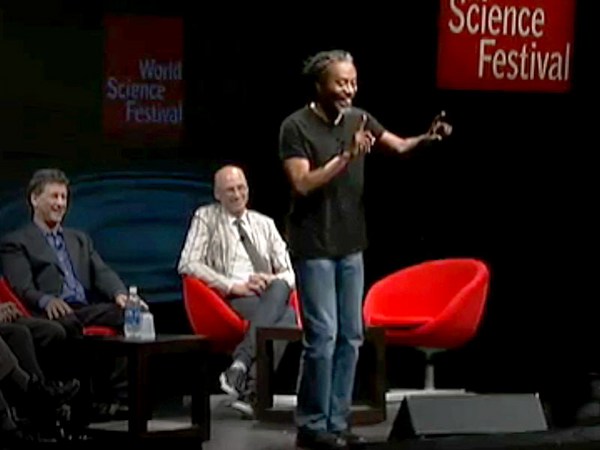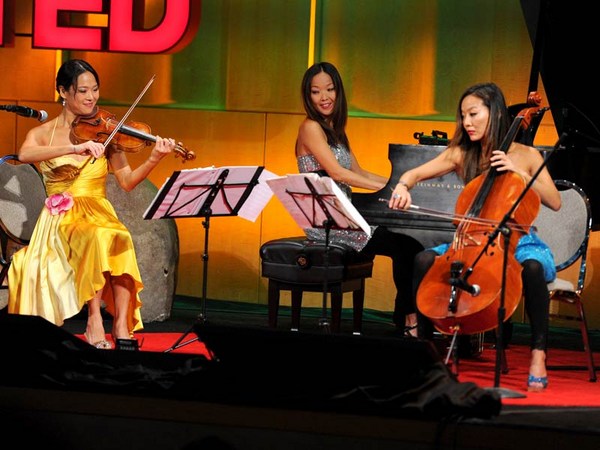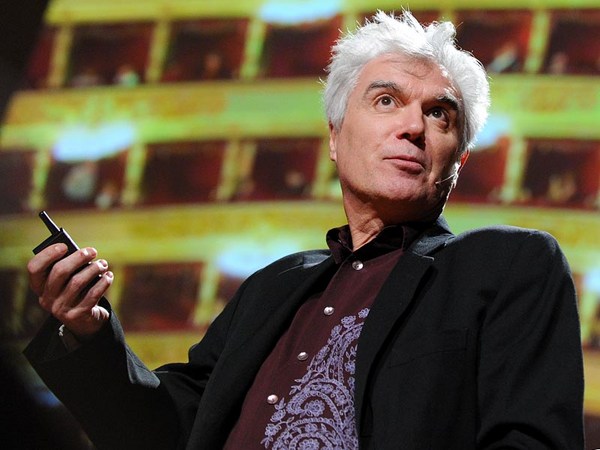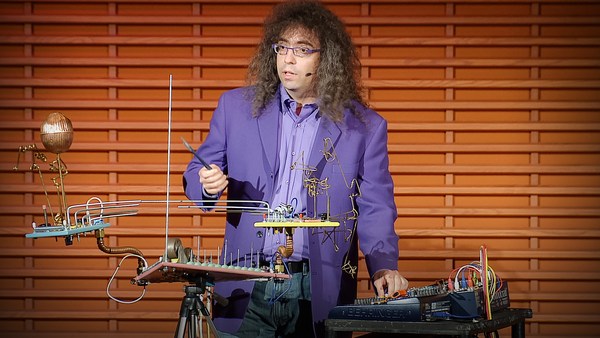Okay, I have no idea what we're going to play. I won't be able to tell you what it is until it happens. I didn't realize there was going to be a little music before. So I think I'm going to start with what I just heard.
(Music)
(Applause)
Okay, so first of all, let's welcome Mr. Jamire Williams on the drums, (Applause) Burniss Travis on the bass, (Applause) and Mr. Christian Sands on the piano.
(Applause)
So the bandstand, as we call it, this is an incredible space. It is really a sacred space. And one of the things that is really sacred about it is that you have no opportunity to think about the future, or the past. You really are alive right here in this moment. There are so many decisions being made when you walk on the bandstand. We had no idea what key we were going to play in. In the middle, we sort of made our way into a song called "Titi Boom." But that could have happened -- maybe, maybe not. Everyone's listening. We're responding. You have no time for projected ideas.
So the idea of a mistake: From the perspective of a jazz musician, it's easier to talk about someone else's mistake. So the way I perceive a mistake when I'm on the bandstand -- first of all, we don't really see it as a mistake. The only mistake lies in that I'm not able to perceive what it is that someone else did. Every "mistake" is an opportunity in jazz. So it's hard to even describe what a funny note would be.
So for example, if I played a color, like we were playing on a palette, that sounded like this ... (Music) So if Christian played a note -- like play an F. (Music) See, these are all right inside of the color palette. If you played an E. See, these all lie right inside of this general emotional palette that we were painting. If you played an F# though, (Dissonance) to most people's ears, they would perceive that as a mistake.
So I'm going to show you, we're going to play just for a second. And we're going to play on this palette. And at some point, Christian will introduce this note. And we won't react to it. He'll introduce it for a second and then I'll stop, I'll talk for a second. We'll see what happens when we play with this palette.
(Music)
So someone could conceptually perceive that as a mistake. The only way that I would say it was a mistake is in that we didn't react to it. It was an opportunity that was missed. So it's unpredictable. We'll paint this palette again. He'll play it. I don't know how we'll react to it, but something will change. We'll all accept his ideas, or not.
(Music)
So you see, he played this note. I ended up creating a melody out of it. The texture changed in the drums this time. It got a little bit more rhythmic, a little bit more intense in response to how I responded to it. So there is no mistake. The only mistake is if I'm not aware, if each individual musician is not aware and accepting enough of his fellow band member to incorporate the idea and we don't allow for creativity.
So jazz, this bandstand is absolutely amazing. It's a very purifying experience. And I know that I speak for all of us when I tell you that we don't take it for granted. We know that to be able to come on the bandstand and play music is a blessing. So how does this all relate to behavioral finance? Well we're jazz musicians, so stereotypically we don't have a great relationship to finance.
(Laughter)
Anyway, I just wanted to sort of point out the way that we handle it. And the other dynamic of it is that we don't micromanage in jazz. You have some people who do. But what that does is it actually limits the artistic possibilities. If I come up and I dictate to the band that I want to play like this and I want the music to go this way, and I just jump right in ... ready, just play some time. One, two, one, two, three, four. (Music) It's kind of chaotic because I'm bullying my ideas. I'm telling them, "You come with me over this way."
If I really want the music to go there, the best way for me to do it is to listen. This is a science of listening. It has far more to do with what I can perceive than what it is that I can do. So if I want the music to get to a certain level of intensity, the first step for me is to be patient, to listen to what's going on and pull from something that's going on around me. When you do that, you engage and inspire the other musicians and they give you more, and gradually it builds. Watch. One, two, a one, two, three, four.
(Music)
Totally different experience when I'm pulling ideas. It's much more organic. It's much more nuanced. It's not about bullying my vision or anything like that. It's about being here in the moment, accepting one another and allowing creativity to flow.
Thank you.
(Applause)





